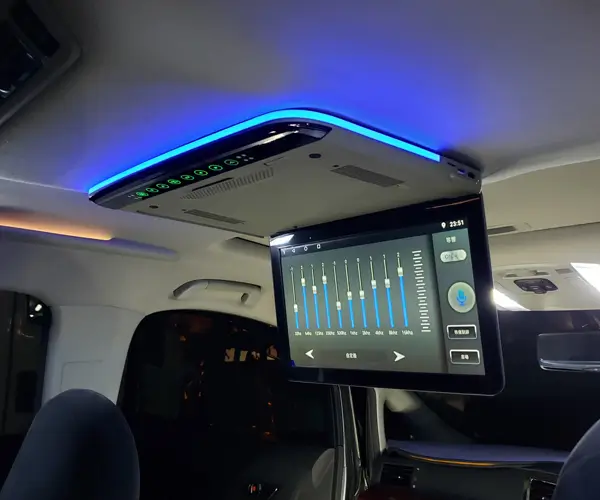In the rapidly evolving landscape of modern engineering, the pursuit of precision, efficiency, and flexibility remains relentless. Among the many technological advancements fueling industries—from robotics and manufacturing to automotive and home automation—the gear box DC motor stands out as a true game-changer. This sophisticated component combines the remarkable versatility of a direct current (DC) motor with the reliable, precise power transmission offered by a specially designed gear box. The resulting synergy unlocks a treasure trove of possibilities for engineers and innovators alike, transforming how machines perform and adapt to their environments.

Understanding the Basics: What is a Gear Box DC Motor?
At its core, a gear box DC motor is essentially a standard DC motor integrated with a gear reduction mechanism. The primary purpose of the gear box—also known as a gear reducer—is to modify the motor's output speed and torque in accordance with specific application requirements. While a typical DC motor can spin at high speeds, its torque output tends to be limited. Conversely, a gear box reduces this rotational speed, boosting torque and enabling the motor to handle heavier loads or deliver more precise movement.
Imagine a simple example: a small electric motor spinning rapidly—say, 10,000 revolutions per minute (RPM)—which is great for speed but not suitable for tasks requiring substantial force or fine control. Pair that motor with a gear box that reduces the output speed to a manageable 100 RPM, while amplifying the torque roughly tenfold. This combination allows the motor to effectively perform demanding tasks like lifting heavy objects or precise positioning in robotics.
The Mechanics of Gear Box DC Motors
A gear box generally comprises a series of gears—spur gears, planetary gears, or worm gears—carefully arranged to achieve desired output characteristics. These gears are housed within a compact casing designed to withstand operational stresses and environmental factors.
Gear Ratios: This term describes the relationship between the input speed and output speed. A gear ratio of 10:1 means the output shaft turns at one-tenth the speed of the motor but with ten times the torque. Engineers select an appropriate ratio based on the application's needs, balancing speed and force.
Material and Design: High-quality materials such as steel, brass, or specialized plastics are used for gears, ensuring durability, resistance to wear, and minimal energy loss. The design also minimizes backlash—unwanted movement between gears—improving accuracy particularly in positioning systems.
Lubrication and Sealing: Proper lubrication reduces wear and heat buildup, extending the lifespan of the gear box. Seals protect internal components from dust, moisture, and other contaminants.
Why Gear Box DC Motors are a Staple in Industry
The combination of a DC motor with a gear box offers several compelling benefits that explain their widespread use:
Enhanced Control and Precision: Many applications demand exact positioning or speed regulation. Gear box DC motors can be finely tuned to deliver consistent, predictable performance, especially when paired with control systems like encoders and feedback loops.
Increased Torque: The gear reduction significantly amplifies torque, making it capable of handling heavier loads without necessitating larger, more power-hungry motors.
Energy Efficiency: By matching the motor’s output to the application's requirements, gear box DC motors reduce power wastage, leading to lower energy consumption and operational costs.
Compact and Lightweight Design: Despite their capabilities, these motor-gearbox assemblies tend to be smaller and lighter than alternative solutions, making them suitable for tight spaces.
Versatility and Customization: Gear ratios, gear types, motor specifications, and protective features can be customized to suit a broad spectrum of applications—from tiny robotic joints to large industrial conveyors.
Diverse Applications of Gear Box DC Motors
The flexibility of gear box DC motors makes them indispensable in numerous industries:
Robotics: Precise motion control is key. Gear box DC motors facilitate smooth arm movements, accurate positioning, and controlled driving in robotic systems.
Automotive Industry: Electric seat adjustments, window regulators, and even hybrid vehicle propulsion systems use these motors for their reliability and fine control.
Manufacturing and Automation: Conveyor belts, packaging machines, and CNC machinery rely heavily on gear box DC motors to ensure consistent speed and torque under varying load conditions.
Home Appliances: From intelligent window blinds to washing machine agitators, these motors offer quiet, efficient operation tailored to user needs.
Aerospace and Defense: Their high precision and adaptability make them suitable for critical control systems in aircraft and military equipment.
The Evolution and Future of Gear Box DC Motors
Advancements in materials science, microelectronics, and control algorithms continue to push the boundaries of what gear box DC motors can achieve. Modern designs incorporate sealed gearboxes with low backlash and minimal maintenance requirements, as well as smart sensors that provide real-time feedback for AI-driven control systems.
The future points toward integration with IoT (Internet of Things) platforms, where remote monitoring, predictive maintenance, and adaptive control become standard. Moreover, innovations in brushless DC motors (BLDCs) paired with gearboxes promise even higher efficiencies, longer lifespans, and quieter operation, opening new horizons for automation, especially in sensitive or noise-sensitive environments.
Leveraging innovations in modular drive technology, Kpower integrates high-performance motors, precision reducers, and multi-protocol control systems to provide efficient and customized smart drive system solutions.




































